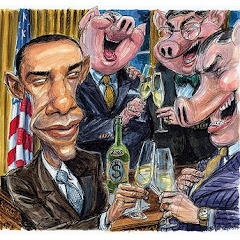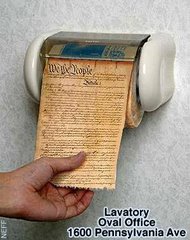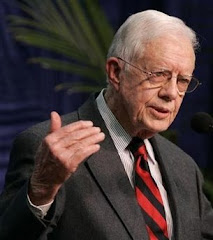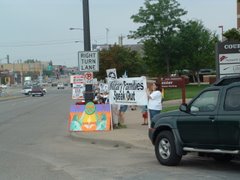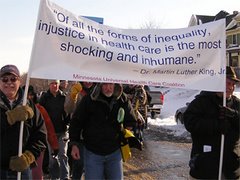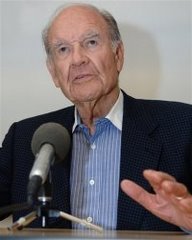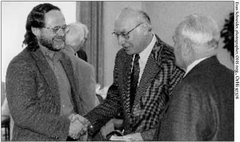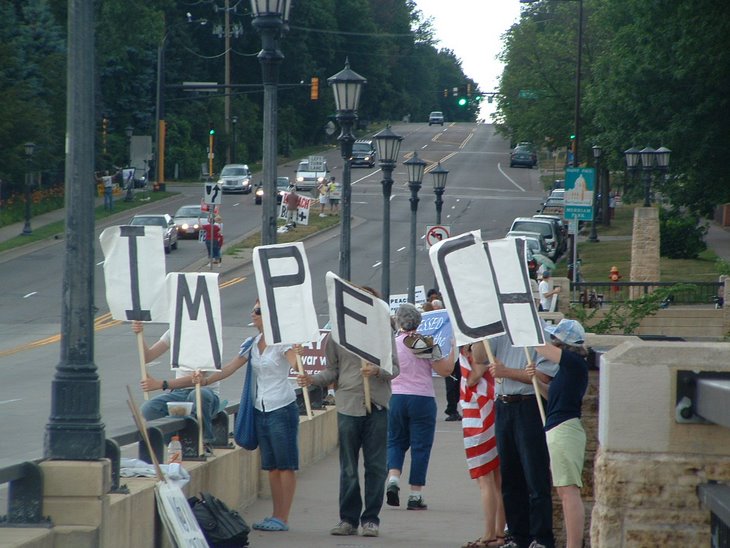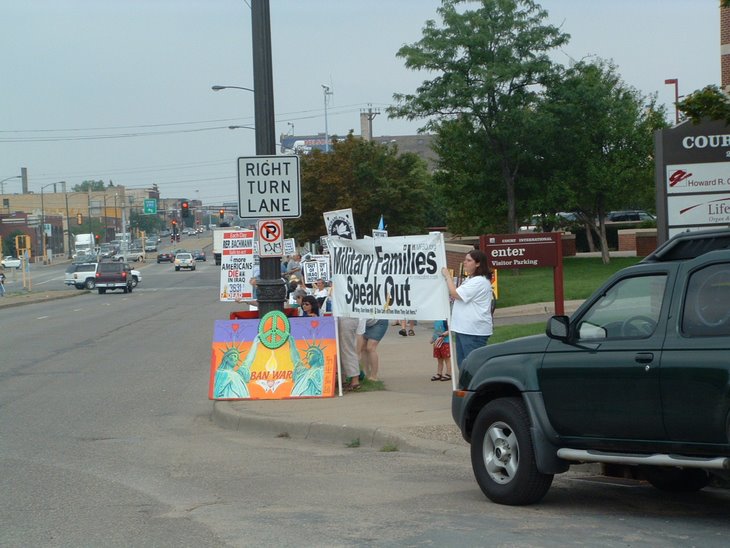Crime really does pay... and it seems to pay pretty good. Only in America!
I guess Obama figured he needed to help out those 20,000 middle class auto workers who befriended him now headed for the streets who will find it difficult making payments on their homes... although as good as Obama's deal is... refinancing under Obama's plan while unemployed might present quite a little difficulty.
In fact, Obama's plan is going to be pretty darn good... damn good, in fact, for people making over $125,000.00 a year with $400,000.00 homes. Ed McMahon, Johnny Carson's old sidekick, should come out of this in good shape and be able to avoid homelessness.
Here is the heart of Obama's mortgage relief for his middle class base of supporters:
Headlining Obama's plan was a $75 billion Homeowner Stability Initiative, which would provide a set of incentives to lenders to cut monthly mortgage payments to sustainable levels. It defines this at no more than 31 percent of a homeowners income. Funding would come from the $700 billion financial industry bailout passed by Congress last fall.
Another key component: a new program aimed at helping homeowners said to be "under water" — with dwellings whose value have sunk below the principal still owing on their mortgages. Such mortgages have traditionally been almost impossible to refinance. But the White House said its program will help 4 to 5 million families do just that.
I wonder how this will affect a family living in their car?
No doubt Obama will be addressing the problems of those living under bridges and in cardboard boxes during his second term.
If Obama can do for world peace what he has done for Wall Street bankers, the auto industry and now homeowners we should be in for one heck of a war.
Obama unveils $75 billion mortgage relief plan
http://news.yahoo.com/s/ap/20090218/ap_on_go_pr_wh/obama_home_foreclosures
AP – President Barack Obama speaks at the Museum of Nature and Science in central Denver on Tuesday, Feb. … MESA, Ariz. – President Barack Obama says his $75 billion plan to tackle "a crisis unlike any we've ever known" in home foreclosures is necessary to help save the economy.
Obama unveiled the plan in Arizona, hard-hit by the housing crunch. More expensive than expected, it aims to keep 9 million people from losing their homes.
One part will ease refinancing for people who owe more on their mortgages than their homes are currently worth. Another provides incentives for mortgage lenders to help those on the verge of foreclosure.
Speaking at a high school outside Phoenix, Obama said the plan won't save every home but it will prevent "the worst consequences of this crisis from wreaking even greater havoc on the economy."
PHOENIX (AP) — President Barack Obama marshaled $75 billion on Wednesday to tackle the foreclosure crisis in an effort to prevent up to 9 million Americans from losing their homes.
In tandem, the Treasury Department said it would double the size of its lifeline to Fannie Mae and Freddie Mac. The government, which seized the mortgage finance companies last fall, said it would absorb up to $200 billion in losses at each company.
The plan is more ambitious than initially expected — and more expensive. It aims to aid borrowers who owe more on their mortgages than their homes are currently worth, and borrowers who are on the verge of foreclosure.
The initiative is designed to help up to 5 million borrowers refinance — if their mortgages are owned or guaranteed by Fannie Mae or Freddie Mac. It also provides incentive payments to mortgage lenders in an effort to convince them to help up to 4 million borrowers on the verge of foreclosure.
"All of us are paying a price for this home mortgage crisis," Obama said in remarks prepared for delivery at a ceremony announcing the program at a Phoenix area high school.
The housing industry has been devastated by the nation's recession. Construction of new homes and applications for future projects both plunged to record lows in January as all parts of the country showed big declines in building activity. Analysts hope that a boost from government programs, including the efforts to stem foreclosures, will help stop the slide.
Headlining Obama's plan was a $75 billion Homeowner Stability Initiative, which would provide a set of incentives to lenders to cut monthly mortgage payments to sustainable levels. It defines this at no more than 31 percent of a homeowners income. Funding would come from the $700 billion financial industry bailout passed by Congress last fall.
Another key component: a new program aimed at helping homeowners said to be "under water" — with dwellings whose value have sunk below the principal still owing on their mortgages. Such mortgages have traditionally been almost impossible to refinance. But the White House said its program will help 4 to 5 million families do just that.
Obama said this change would come at "roughly zero" cost to taxpayers.
Of the nearly 52 million U.S. homeowners with a mortgage, about 13.8 million, or nearly 27 percent, owe more on their mortgage than their house is now worth, according to Moody's Economy.com
Announcing his plan in a state hard hit by the housing crunch, Obama said that stemming the tide of foreclosures is key to turning around the recession-bound economy.
"In the end, all of us are paying a price for this home mortgage crisis. And all of us will pay an even steeper price if we allow this crisis to deepen," he said, according to the advance text.
The plan also seeks to bolster confidence in Fannie Mae and Freddie Mac, the mortgage giants effectively taken over by the government last year. The White House said the Treasury will be able to increase its funding commitment to the two by using money Congress set aside last year, and will continue purchasing mortgage-backed securities from them.
The Treasury said the increased support for Fannie Mae and Freddie Mac didn't reflect projected losses at the two companies, which were seized by government regulators last September. The two companies are currently projected to need a combined government subsidy of about $66 billion, well short of the new promise of up to $400 billion.
But Treasury Secretary Timothy Geithner said in a statement that the support "will provide forward-looking confidence in the mortgage market and enable Fannie Mae and Freddie Mac to carry out ambitious efforts to ensure mortgage affordability for responsible homeowners."
The biggest players in the mortgage industry already had halted foreclosures pending Obama's announcement.
The president's announcement was coming a day after he signed into law a $787 billion economic stimulus plan he hopes will spark an economic turnaround and create or save 3.5 million jobs.
At the same time, the administration was grappling with the darkening prospects for the U.S. auto industry.
Even as Detroit carmakers submitted restructuring plans to qualify for continued government loans, General Motors Corp. and Chrysler LLC asked for another $14 billion in bailout cash.
Explaining the plan, Treasury Secretary Timothy Geithner told reporters, ""This is necessary policy. It's smart economics. And it's just and fair."
Asked why the cost had jumped to $75 billion, Geithner said, "We think that's necessary to make a program like this work."
Asked about the doubling of the guarantees for Fannie and Freddie, he said: "This is not a judgment about the expected losses ahead. It underscores commitment, and that is very important to help keep mortgage rates low."
Geithner said most not all of the money would come the financial bailout fund.
And he said relief would be almost instantaneous, basically as soon as rules are published March 4. "You'll start to see the effects quite quickly", Geithner said.
FDIC Chairman Sheila Bair said that previous efforts had largely flopped. "We've not attacked the problem at the core," she told reporters. "We are woefully behind the curve."
Added Geithner: "The cost of inaction has been very severe."
Housing Secretary Shaun Donovan stressed that homeowners don't need to be delinquent in order to get help.
___
Alan Zibel reported from Washington; Associated Press Writers Liz Sidoti and Martin Crutsinger also contributed to this report.






























